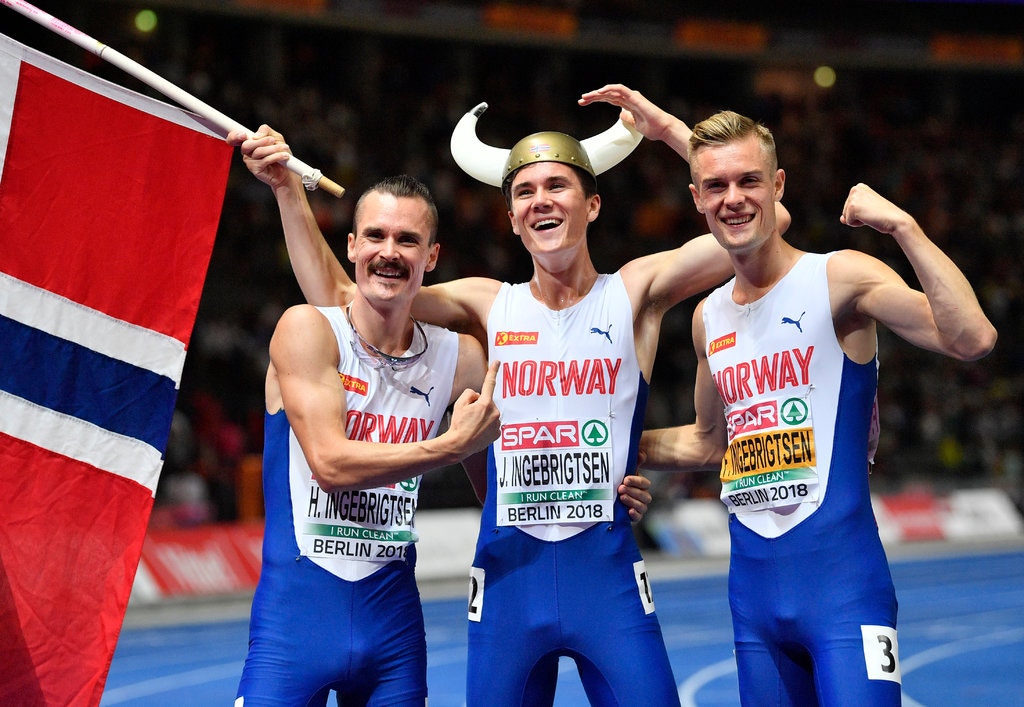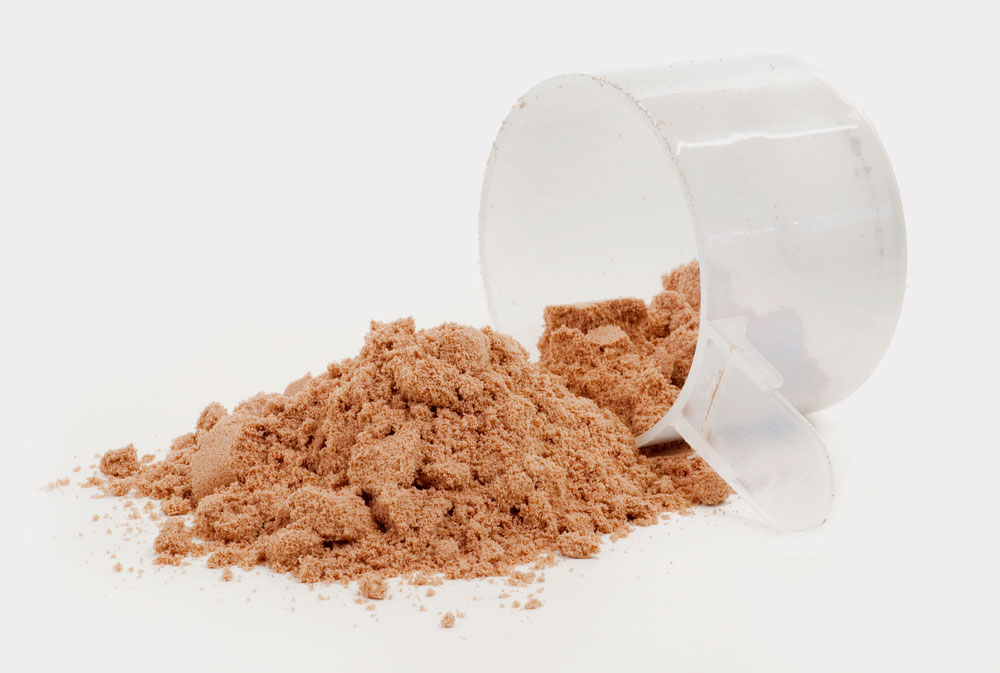What the Ingebrigtsen Brothers Can Teach Us About Nature, Nurture and Running
PHYS ED
What the Ingebrigtsen Brothers Can Teach Us About Nature, Nurture and Running
There’s more than one right way to rear and shape young athletes.

Norway’s gold medal winner Jakob Ingebrigtsen is flanked by his brothers Henrik, left, and Filip after the men’s 1500-meter final at the European Athletics Championships at the Olympic stadium in Berlin in August, 2018.
Is there one right way to rear and shape a young runner?
According to an intimate new case study of the lives, backgrounds and training of Henrik, Filip and Jakob Ingebrigtsen, three world-class, middle-distance runners and brothers from Norway, young athletes may be able to follow varying routes to running success. But all of the paths involve an intersection of familial support and frequent intervals.
The case study, based in large part on personal observation and interviews, raises interesting questions about the braided roles of nature and nurture in the making of an athlete. The in-depth look at the brothers’ lives and training also offers nifty, practical advice for any of us who might like to be swifter.
Athletic talent and how best to cultivate it are hot-button topics today, inspiring arguments, books, conferences, parental anxieties and reams of research. Athletes and those raising them often wonder whether performance depends more on ability or practice, and whether it is ever too early or late to take up a sport.
In those contexts, the example of the Ingebrigtsens can be instructive. Probably the most-accomplished distance-running siblings competing today, the three of them sequentially won European championships in the 1,500 meters and, between them, own all Norwegian age-group records for the 1,500 meters, as well as many of the records for the 800 and 5,000 meters.
The oldest of the three, Henrik, now 28, first won the European 1,500-meters title in 2012. Six years later, Jakob, who turns 19 this month, won the 1,500- and 5,000-meter races at the European championships and, in July, set a new national record in the 5,000 meters. In between, Filip, 26, won the European 1,500-meter title in 2016 and still holds the Norwegian record in that distance. (The brothers are the second, third and fifth eldest of seven siblings.)
This outsize familial success attracted the attention of Leif Inge Tjelta, a professor of sports science at the University of Stavanger in Norway, who has long studied and worked with distance runners, including Grete Waitz, the nine-time New York City Marathon winner from Norway. About seven years ago, Dr. Tjelta began attending and taking notes at the Ingebrigtsens’ training sessions. He also spoke with the young men and their parents. Their father, Gjert, has coached his sons throughout their careers, although he never ran competitively.
For the new study, which was published this month in the International Journal of Sports Science and Coaching, Dr. Tjelta set out to analyze what, in particular, about the Ingebrigtsens and their lives and training might be most consequential for their medal haul.
Perhaps most obviously, he noted, the Ingebrigtsens trained with relatively light mileage when they were young. While some elite teenage runners aim to complete as many as 90 or more miles a week, the Ingebrigtsen boys ran about 45 to 50 miles a week before they turned 16 and, at the direction of their father-slash-coach, gradually increased that mileage over the course of the next few years, until they plateaued at about 95 to 100 miles a week when they turned 18.
Little of this mileage involved intervals when the runners were young, Dr. Tjelta also points out. Before they turned 16, their training runs primarily were long and continuous. After that point, their father began threading in frequent interval sessions, most involving intense, minutes-long speed bursts at about the pace at which the young men would run a 10,000-meter race. This pace is somewhat slower than that at which many elite runners complete most of their intervals, which might be closer to, for instance, their 3,000- or 1,500-meter time.
Perhaps more surprising, the two older boys interspersed their running with serious, competitive soccer and elite, cross-country ski racing. Filip remained a multisport athlete until he was almost 17. Only Jakob, the youngest, focused exclusively on distance running, although he also competed in other track events, including hurdling and high jumping.
Meanwhile, interpersonal aspects of their training also loomed large. The brothers trained together from the time Jakob was about 12, alternately pushing and encouraging one another, they explained to Dr. Tjelta. In their telling, the environment at home nudged them into running, but did not demand it; some of their siblings play other sports.
Taken as a whole, Dr. Tjelta says, this anecdotal evidence seems to contain lessons for other young runners and their coaches, suggesting that success can involve slowly ramping up mileage, while holding off on intense interval training until later. Young athletes can also take solace knowing that success can come by playing multiple sports throughout their teens or specializing in one sport from the first.
Of course, this study was based on observations, not experiments, and involved exclusively Ingebrigtsens, making it impossible to tease out the unique roles of genetics and environment, or to be sure how well the results apply to non-Ingebrigtsens.
The brothers “have been very lucky with their genes,” Dr. Tjelta says. “But genes had to be combined with the other factors.”
Later this month, Henrik, Filip and Jakob are scheduled to compete at the track and field World Championships in Qatar, while back in Norway, the two youngest Ingebrigtsen siblings, a boy and girl, are just starting to train as runners, Dr. Tjelta says.
Correction: Sept. 14, 2019
An earlier version of this article misstated the pace at which the Ingebrigtsen brothers trained for short intervals. It was the pace of a 10,000-meter race, not a 10,000-kilometer race.





